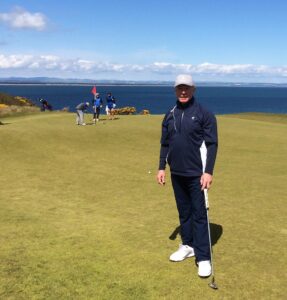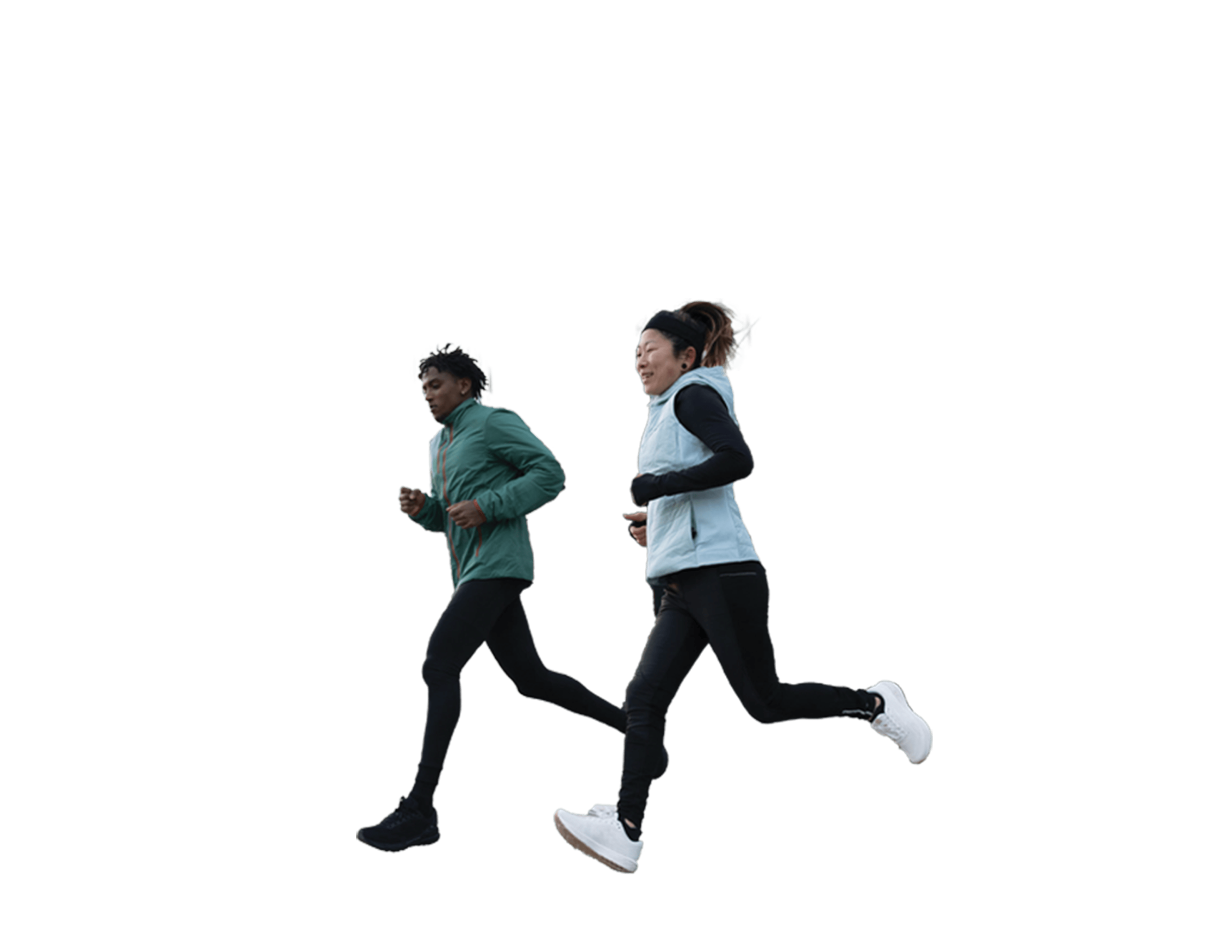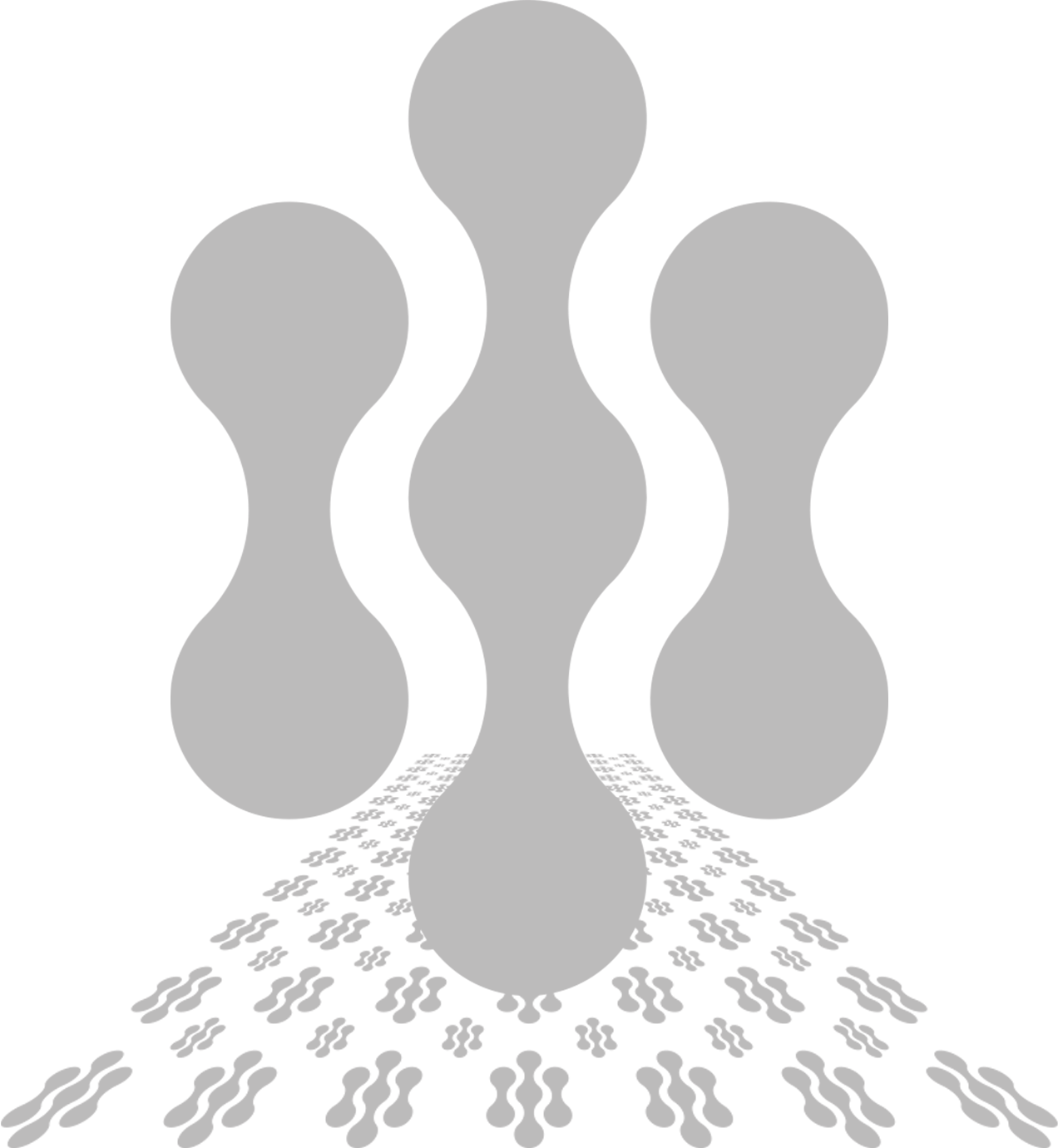To hear Glenn Barrett tell it, he was just one fork in the road away from being a ski bum (a term of affection here at OrthoLite). Had he kept driving north, in 1979, to the mountains of Vermont instead of taking a job in central Massachusetts, the footwear industry would look a lot different today.
Glenn is the founder and CEO of OrthoLite, and a self-described shoe dog. To anyone in the footwear realm, he’s a downright legend. He grew in the industry by taking risks and learning things the hard way.
Glenn might describe himself as occasionally brash. His friends and colleagues would say he’s earned the right to be. He’s a visionary who also puts in the hard work. For over 30 years and counting, he has been a step ahead of the manufacturing trends and the market needs before most people even detected a blip. And perhaps just as importantly, he knows he doesn’t do it alone. Respect and the importance of relationships were baked into the OrthoLite ethos since he launched the company in 1997.
Through building strong teams and making bold choices, Glenn has led OrthoLite to become the premier insole manufacturer in the world. It is the preferred insole for over 350 brands across all categories of footwear.
Even with that remarkable track record, Glenn isn’t so good at settling for the status quo, a fact which will be substantiated this summer when new evolutions for the company — and in footwear — are announced. He’s not risking the ire of his team by spilling the big news here (yet). Even if we couldn’t get that scoop out of him, we sat down with Glenn to learn how his leadership style has positioned OrthoLite as the leading OEM (ingredient) brand today and how it just may redefine footwear in the future.
OrthoLite (OLT): Before we even get started, how do you define shoe dog?
Glenn Barrett (GB): A shoe dog is a person who has dedicated their professional life to the designing, making, improving and selling shoes. We lifers refer to each other as such. I am one step beyond because improving the lot of those who wear shoes (a fairly large audience), is my personal mission. And I do it through comfort.
OLT: I’ve got to ask. How many pairs of shoes do you have?
GB: Only the pair I’m wearing. Honestly though, I have too many, but usually I wear the same three or four pairs of shoes, and whatever is the most comfortable. I am a relentless wear tester of our insole material.
OLT: Let’s start with a quick recap of how you got here. After graduating from college, you sold teletype machines for Western Union in New York. Out of the blue, you were recruited to work with a footwear company. Why did you make that change?
GB: Skiing (laughs). I didn’t fit in New York. I was wearing a cheap suit, carrying a vinyl briefcase, and wasn’t particularly excited about what I was doing. I’d actually just resigned when a recruiter offered me a job with a company that made rubber soles for shoes. It was located in central Massachusetts, which was an hour and a half closer to skiing in Vermont. So why not?
The funny part is that the recruiter didn’t initially name the company. Without realizing I’d somehow always paid attention to shoes, I just knew it had to be Vibram. [Ed. note: The company was Quabaug, the U.S.-based licensee and manufacturer for Vibram.]
OLT: So in the ongoing nature vs. nurture debate for shoe dogs, score for one nature! You worked there for eight years and became the top salesperson. What changed?
GB: My friends at shoe brands were telling me all about the innovations in Taiwan and South Korea. That was where American brands were making shoes. That was where the development was. I convinced my company to send me over to check it out. My eyes were opened wide! I came back all excited. This was 1986 or 1987, and I said, “All shoes are going to be made over there. They’re not even going to be making shoes in the United States in 15 years.”
OLT: How did your company respond to those predictions?
GB: I tried to convince them for months that we needed to move manufacturing to Asia. It was the future. They knew U.S. manufacturing was on the decline, but you know what they wanted me to do about it? They wanted me to “manage the decline.”
OLT: Yikes. What did you do?
GB: I can tell you that “managing the decline” didn’t appeal to me. I was gung ho and I thought I had a good idea! It was around this time when I realized I wasn’t effective working for other people. It’s no secret that I have an issue with authority. I knew I was going to have to create my own situation. I stuck it out for another year to learn as much as I absolutely could. Then I managed to get myself fired with six months of severance, so I could do it on my own.
OLT: Your good idea was to manufacture components and rubber outsoles in Asia and abroad that could effectively compete with Vibram. This became your first company, G2, correct?
GB: Yes. I actually tried to get Vibram on-board with my vision first, but they didn’t go for it. So I connected with an engineering guy, named Gary Pontbriand, and we formed G2. We made really high quality, performance outsoles in Korea, Taiwan, Malaysia, the Czech Republic and Mexico. With lower manufacturing costs, we were able to sell at a good price: 25–30% less than Vibram.
OLT: How did it go?
GB: As you can imagine, our price point didn’t settle well with Vibram, who thought we were being too aggressive. They sued. We didn’t have any money for lawyers, so I aired it out in the media. It turned out that we garnered some good press, which incidentally, helped us launch the brand. Our first customers were big players, like: Dexter, Cole Haan and Timberland. But the biggest lesson from the early days of G2 was the importance of good relationships with our factories.
OLT: What did you learn about factory relationships during this time?
GB: Brands were our customers, but the factories had the power to kill us if they wanted to. We were basically subcontractors, and we worked hard to deliver and maintain excellent customer service with both the factories and our brand partners. We’re all in it together. But in this industry, the power is with the manufacturers.
OLT: This feels like we’re leading to OrthoLite. A point of differentiation — and a huge value add for your brand partners — is that OrthoLite owns its own manufacturing. Fostering good relationships with factories is one thing. How did you decide that owning your factories was the next logical step?
GB: The thing about owning our own factory came about in 2008 with OrthoLite. It let us control our destiny. When we became a major supplier of scale we had to produce our own products. We were also developing chemical compounds in house that were better than what we could source from BASF. We had to prove to our customers that we are 100% serious about this business and investing and building your own means of production is the most effective way to illustrate that point and improve control and profit!
In 1994, we sold G2 to Jones & Vining, and I worked in-house for about nine months. But as I mentioned, I’m not great at working for other people. I thought there was an untapped opportunity to manufacture more in Mexico. I founded Onshore Productions to do just that.
Things were fine, if not seamless, until I got the idea to “graduate” from making components to making shoes — like a rite of passage. Big mistake! Shoes are way too hard to make. I’ll tell you that right now.
I learned the hard and expensive way to control your own supply chain. If you’re going to control your destiny, owning the means of production is paramount. Thanks to those experiences, OrthoLite is one of the few American companies that owns our means of production in Asia. It really makes us distinctive.
OLT: So Onshore Productions hit a few early bumps in the road, but it’s also where OrthoLite was born, right?
GB: Yeah. We’re making shoes in Mexico and this guy brings me a material sample to test out as an insole or lining material. It was invented by a chemist in Taiwan, named David Chen. I thought it looked good, but I was too busy making shoes to do anything about it. Eventually, I shared the sample with some friends at Timberland and New Balance. They saw the same potential in it, so I flew over to Taiwan to meet David Chen. I launched OrthoLite as a division of Onshore Productions in 1997.
OLT: Was he already manufacturing the material in bulk?
GB: Ha! No. It was two guys in sandals with buckets and a mixmaster type of thing. They were whipping up this polyurethane material and filling tiny molds literally in the dude’s garage.
OLT: Were they already working with recycled rubber (the black flecks in every OrthoLite insole)?
GB: No, I asked them to give it a try. Remember that I had come out of the rubber business. At that time, they used to have big tire dumps in California. When they’d inevitably catch fire, they’d burned for years. It bothered me. So I thought maybe we could minimize that rubber waste by grinding old tires and repurposing them into rubber soles. But…that didn’t work.
So I started a vulcanized rubber project with the polymer team at UMass, Amherst, using old tires. A bunch of time and $100,000 later: that didn’t work either.
I went back to David Chen, and asked if we could simply sprinkle some tire crumb or tire dust into his formula. As it is so often in life and in business, the simplest solution was the best solution. That’s the origin of the black specks in OrthoLite insoles. After a few years, we switched from tire regrind and instead started using regrind from shoe rubber — a by-product of outsoles from shoe factories
OLT: But back up a minute! You’re saying that your goal was to reuse old tires to mitigate the environmental disaster of yearslong rubber fires. Did anyone understand the connection?
GB: Honestly, we never talked about it in the beginning. I figured it would be a little tiny environmental contribution that we could make. Chen made it happen, and we’ve always done it to this day.
OLT: You have a large global footprint and an exceptional team across all areas of expertise. What is your philosophy on building a team with global scale?
GB: I try to surround myself with people who are way smarter than me. I’ve been successful at that, ’cause most people are! It’s also important to us to bring in men and women who have worked at real companies before.
OLT: How do you harness that experience in a focused direction?
GB: When we first got started, I literally said nobody’s allowed to have an individual ego here. We have one shared ego, and it’s called OrthoLite. This is who we serve. You know, everybody’s a star, but we do what’s best for the enterprise and for this brand. That’s the most direct and effective way to serve our brand partners. As long as we focus on that, we’ll be fine. Just don’t let yourself get in the way.
OLT: You’ve also developed an incredible culture of innovation. How do you keep that growing?
GB: I could name a bunch of individuals who are really pushing our innovation forward. As a philosophy, I believe three principles guide a culture of innovation. They are trust [in your team], persistence, and allowing the independence to apply their own brand of creativity or genius.
A company must continually innovate, it’s the only way to stay relevant…(besides the copy cats need someone to knock off).
OLT: You walk the walk on the importance of relationships.
GB: This company has been built on the power of relationships and collaboration. The shoe business is very small; we all know each other at some level. And we’re going to encounter one another through our careers, in different capacities. The reason that we’ve been able to work with as many brands as we do, and why our business continues to grow in a year where everybody’s been challenged, I believe is based on the strength of our relationships. It’s been more than just me, but this was a very intentional decision and structure from day one.
OLT: Since the beginning, you’ve referred to your team as the OrthoLite family. Now that your son John has been promoted to President, you’re working closely with actual family. How’s it going?
GB: You know, it’s been absolutely incredible. We never could have pulled off our plans [that you’ll see in this summer] if John hadn’t been working on the ground in Asia up until a year ago. I’m his dad. I admit there are days when I want to tell him, “Shut up and eat your peas, or I’m not giving you any ice cream.” But he keeps me in check when I slip into dad mode. As a colleague, I respect him as a professional, and we’re both laser focused on what’s good for this company.
OLT: You’ve joked that you’re the second oldest person still working in the shoe industry. What do you still love about your job?
GB: What keeps me the most excited is talking to customers. Maybe it’s the old salesman in me, but I still love to talk about shoes and business with other folks in the industry. For me, it’s the most fun! That’s what we shoe dogs do!
Thanks so much, Glenn! It’s evident that loving what you do has been central to OrthoLite’s continued success.









